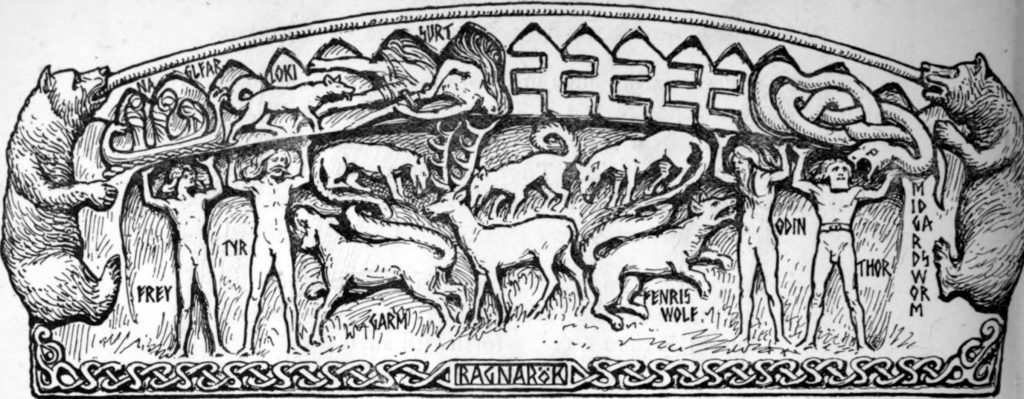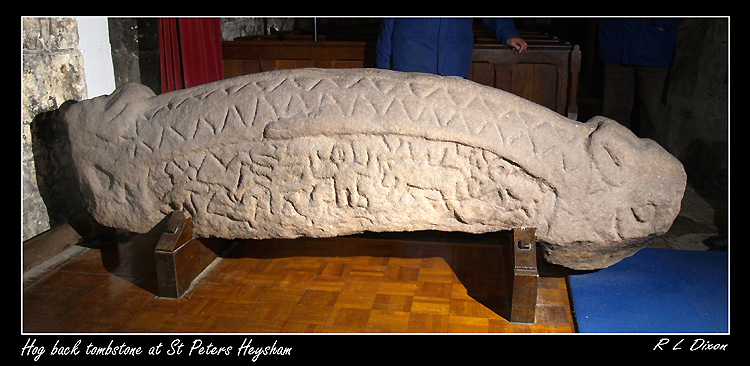Earliest Portrayal of Dwarfs: Heysham? August 5, 2017
Author: Beach Combing | in : Medieval , trackbackEarly medieval and medieval literature is full of fairies, kobolds, gnomes and other supernatural entities. But when we come to try and understand how our ancestors envisaged these supernatural beasts we run into problems. We don’t, unfortunately, have early illustrations of fairies and their ilk; or at least we don’t have illustrations that can be confidently identified as such. Beach, today, ran across, though, a tenth-century carving that might, repeat, might have some dwarfs on it. Welcome, dear reader, to the Heysham Hogback. Heysham is a north-western English village that fell, with the rest of Lancashire, under the Viking jackboot in the ninth and tenth centuries.
The Hogback was almost certainly a gravestone and has a series of intricate carvings on it: the hogback is typically from Viking contexts in Britain. The stone is remarkably well preserved, probably because it was found so late (c. 1800) and on one side shows four figures standing and apparently touching the sky (or praying, or surrendering). There are literally tens of theories as to who these four figures are and many doubts. As Dr. Andrew White puts it: ‘The only people who are certain about the subject of the Hogback are those who do not know anything about the genre’; note the following reconstruction as an example of certainty. But the suggestion that should interest us is that these are the four dwarfs that, according to Norse mythology, hold up the heavens.

The stone seems to be surrounded by a great serpent, Jörmungandr, who encompasses the world and bites his own tail. On the reverse side of the stone there is a single figure in the same pose: possibly Christ (see below), who took the place of the unhappy pagan times that the Viking sculptor had so enjoyed displaying on the other side. Disappointingly for those who wanted to know what Viking dwarfs look like, the four figures lifting their hands up look remarkably like the single figure holding up his hands on the other side: So dwarfs are human like? Well, thanks! Still, it would be nice to think that some Hiberno-Norse or Anglo-Norse sculptor tried to portray dwarfs, just as England was being welded together.

If you want to know more an excellent introductory and opinionated article is this one by John Thor Ewing.
Other early pictures of dwarfs, fairies or gnomes: drbeachcombing At yahoo DOT com




